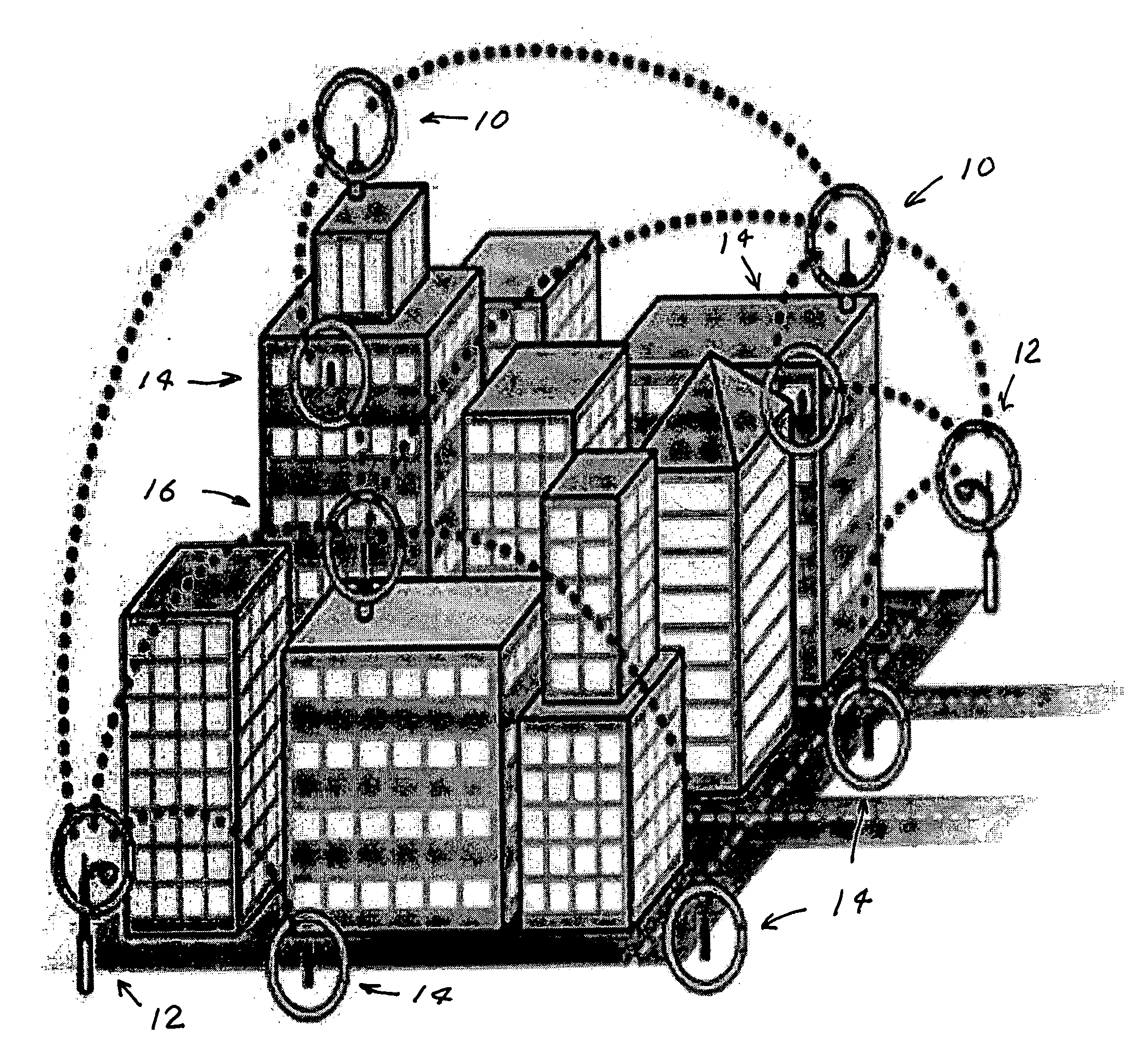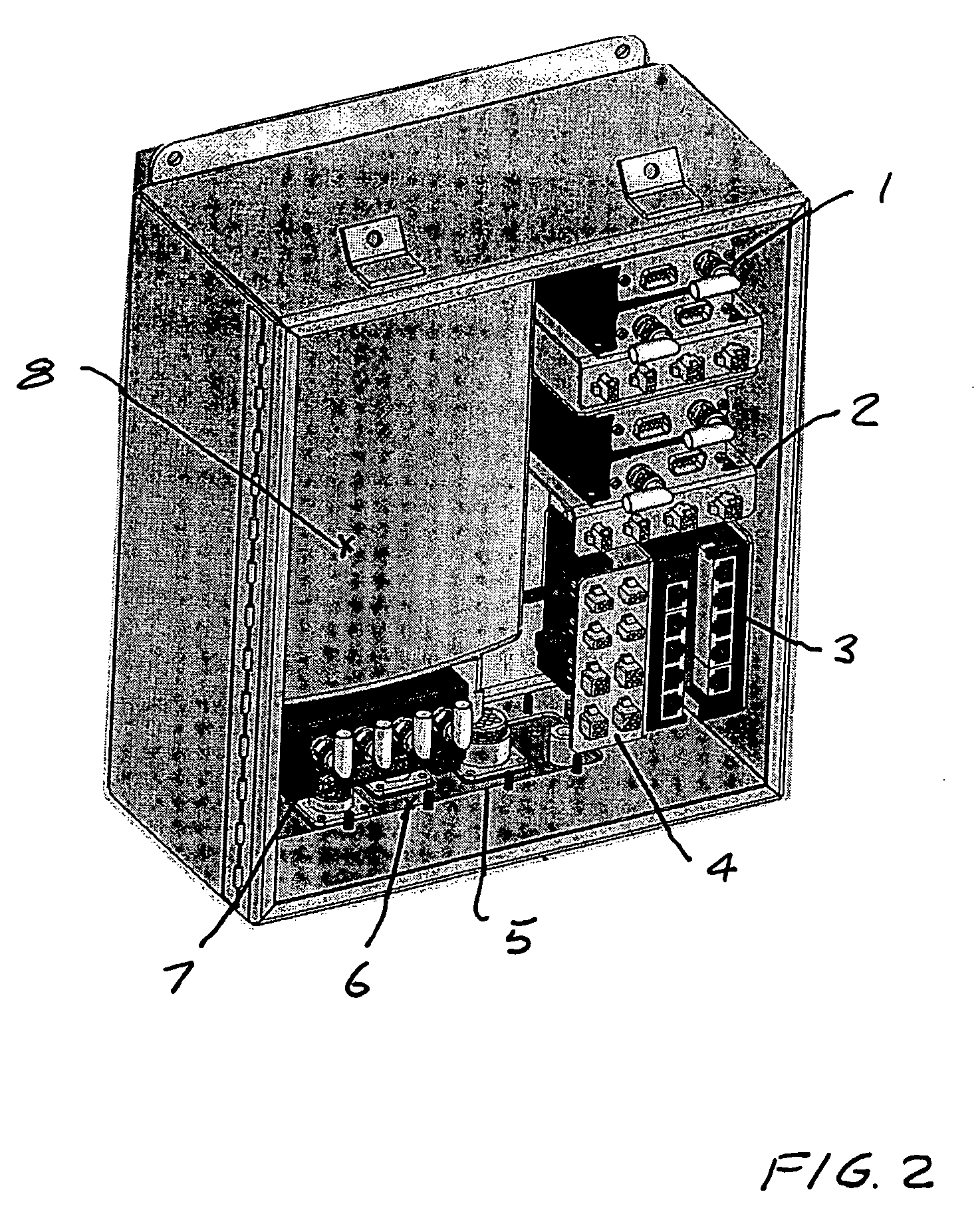Wireless surveillance system
- Summary
- Abstract
- Description
- Claims
- Application Information
AI Technical Summary
Benefits of technology
Problems solved by technology
Method used
Image
Examples
Embodiment Construction
Wireless Mesh Network Surveillance System
[0024] A first preferred embodiment of the present invention provides a wireless video surveillance system that will allow Government agencies and security integrators to provide scalable city-wide infrastructures with an open platform for integration with their existing security and closed circuit television systems. One key element of the new system is based on a new mesh technology that provides multiple transceivers operating at various frequencies to allow for a highly scalable video infrastructure. Applicants have designed the system to maximize bandwidth, using multiple transceivers to enable deployment of wide-area and high-density surveillance systems. In addition, the system will enable automated threat detection as well as the security and redundancy advantages afforded by multiple-frequency systems incorporated into a mesh network architecture.
[0025] This preferred embodiment utilizes multiple transceivers (preferably three) at ...
PUM
 Login to View More
Login to View More Abstract
Description
Claims
Application Information
 Login to View More
Login to View More - R&D
- Intellectual Property
- Life Sciences
- Materials
- Tech Scout
- Unparalleled Data Quality
- Higher Quality Content
- 60% Fewer Hallucinations
Browse by: Latest US Patents, China's latest patents, Technical Efficacy Thesaurus, Application Domain, Technology Topic, Popular Technical Reports.
© 2025 PatSnap. All rights reserved.Legal|Privacy policy|Modern Slavery Act Transparency Statement|Sitemap|About US| Contact US: help@patsnap.com



